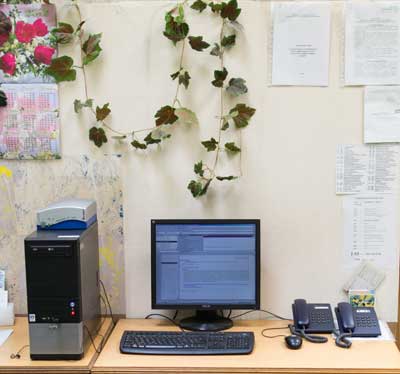 Книжкові видання та компакт-диски  Журнали та продовжувані видання  Автореферати дисертацій  Реферативна база даних  Наукова періодика України  Тематичний навігатор  Авторитетний файл імен осіб
 |
Для швидкої роботи та реалізації всіх функціональних можливостей пошукової системи використовуйте браузер
"Mozilla Firefox" |
|
|
Повнотекстовий пошук
Пошуковий запит: (<.>I=Ж74419/2019/12<.>) |
Загальна кількість знайдених документів : 1
|
 |
Advanced education : зб. наук. пр..- Київ
Advanced Education- Title.
- Contents.
- Chernovaty L., Kovalchuk N. Teaching non-fiction translation: the system of exercises and tasks. - C. 5-11.
- Nikolaeva S. The common European framework of reference for languages: past, present and future. - C. 12-20.
- Mohammad H., Hosseini H. Stance and culture: a comparative study of English and Persian authorial stance in applied linguistics research articles. - C. 21-27.
- Naydan M., Ivanytska M., Perminova A. Approaches to the development of a literary translator’s linguistic identity. - C. 28-34.
- Balendr A., Komarnytska O., Bloshchynskyi I. Ukrainian border guards interoperability assessment in the framework of common European border guard standards implementation. - C. 35-43.
- Labinska B., Tumak O. Implementation of grammar-translation method of teaching foreign languages in English textbooks of Bukovyna (1872 - 1900). - C. 44-48.
- Mykytenko N., Rozhak N., Semeriak I. Teaching communication strategies to the computer programming students. - C. 49-54.
- Lavrinenko I., Shevchenko I. Turn-taking in cinematic discourse: linguistic characteristics and practical implications for ESP teaching. - C. 55-63.
- Hrynko V. Electronic social networking sites as a universal tool for developing future teachers’ digital competence. - C. 64-73.
- Bystrova B., Nemlii L., Pazyura N., Vasiukovych O. Problem-based ESP methods for teaching future air traffic controllers to conduct radio exchange in non-routine situations. - C. 74-79.
- Myhovych I. International mobility as a means of ensuring inclusive global higher education space. - C. 80-86.
- Sandal J.-U., Kolenichenko T., Verbytska A., Dyvnych H. Facilitating intercultural communicative competence of adult learners in the context of higher education internationalisation. - C. 87-93.
- Yevtushenko O., Kovalova T. Media education for future media professionals: designing and implementing a training programme. - C. 94-104 .
- Mukan N., Yaremko H., Kozlovskiy Y., Ortynskiy V., Isayeva O. Teachers’ continuous professional development: Australian experience. - C. 105-113.
- Czepil M., Karpenko O., Revt A., Istomina K. Formation of students’ ethnic tolerance in institutions of higher education. - C. 114-119.
- Demenchuk O. Modelling semantic derivation: semantic shift strategies of irrational vocabulary in English. - C. 120-126.
- Kramar N. Engagement markers in the Feynman lectures on physics: applying Hyland’s interaction framework to spoken academic discourse. - C. 127-133.
- Oleniak M. Dialectic interaction of quantity, quality and relation in simile domain. - C. 134-141.
- Ushchyna V. Cognitive dynamics of stancetaking in risk discourse situation. - C. 142-149.
- Fokin S. Neural network pattern for enhancing functionality of electronic dictionaries. - C. 150-158.
- Mykytiuk I., Lesinska O. English colour lexemes in J. K. Rowling’s novels. - C. 159-167.
- Yemelyanova O. Addressee’s factor in the limerick discourse. - C. 168-173.
- Orel A. Lexical units representing working women in Victorian novels. - C. 174-180 .
- Kizil M., Kushch E. Thematic progression and its types in English literary and legislative texts. - C. 181-187.
- Bilas A. Rendering function features of the French colloquial interrogative constructions in Ukrainian fiction translation. - C. 188-195.
- Hrydzhuk O. The taxonomy of forestry terms in the modern Ukrainian language. - C. 196-205.
- Karpova K. Structural and semantic characteristics of food-related neologisms in modern English. - C. 206-211.
- Petlyuchenko N., Chernyakova V. Features of expressive female speech in the political discourse of Spain and Latin America. - C. 212-219.
- Shepitko S., Smyrnova M. Linguistic personality of metropolitan Anthony of Sourozh (bloom). - C. 220-225.
- Honta I., Pastushenko T., Borysenko N. Colour component in the semantics of ethnophobic terms (the case of non-standard American English). - C. 226-235.
- Pinich I. The re-establishment of ideologeme justice in "greyzone" moral emotions of a raising Victorian ideology. - C. 236-243.
- Moroshkina H. Specificities of the mutual influence of context and assessment in French evaluative utterances. - C. 244-248.
- Haladzhun Z. Linguistic characteristics of the construct "evaluative judgement of a journalist” in the Ukrainian language. - C. 249-255.
- Materynska O. Semantic relation of meronymy in languages of different structure (case study of semantics of body part names). - C. 256-264.
| 2019 | | № 12
|
|
|
|





